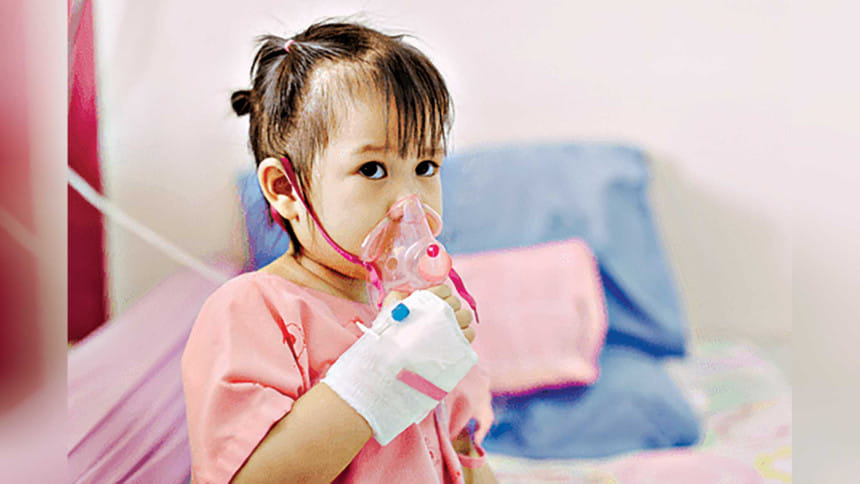Chronic and recurrent pneumonia in children: A changing paradigm of a common disease

Pneumonia is a major respiratory problem in children, both in terms of the number of occurrences and the cause of death. The word, more specifically termed "pneumonitis', implies inflammation of lung cells. When the destructive process is at its peak, it thickens your respiratory membrane, resulting in problematic respiration along with fever, cough, and distress.
Conventionally, people believe that only various organisms can cause pneumonia, despite the existence of several non-infectious mechanisms that are alarmingly on the rise. Among the organisms are bacteria, viruses, fungi, and parasites, with the former two being the most common and originating from both community and hospital settings. The typical course of the disease involves an improved course with or without antibiotics, along with some supportive measures like oxygen therapy, etc.
If a child really has either recurrent or persistent pneumonia, we need to evaluate him/her thoroughly. We must clarify some important histories related to other similar diseases. Pulmonary tuberculosis (TB) should definitely come to mind at the top of the list, especially in our country. TB is somehow difficult to diagnose in children due to non-specific clinical features, difficulty in collecting samples to investigate, and the organism's scarcity.
We should take a history of weight loss, an evening rise in temperature, a persistent cough, less alertness, vaccination, and, most importantly, recent TB contact. Device-induced sputum and stool for GeneXpert are among the most commonly used samples for detecting TB organisms.
Many children used to vomit their feeds, especially liquid feeds, spontaneously or after coughing. Most of them have reflux disease, which drains the vomit from the digestive and respiratory paths and creates repeated pneumonia. We advocate for the mother to feed the babies in a sitting or semi-sitting posture rather than lying, to offer small, frequent feeds, to prepare semi-solid to solid feed in place of whole liquid feed, and also to avoid rigorous shaking after meals. Some long-term medications help with these conditions as well.
A congenital heart defect may be a co-problem or primary culprit for recurrent or persistent pneumonia, mainly due to feeding problems and vomiting. Sometimes the aspiration of a foreign body into the respiratory tract ignites a long-lasting lung pathology. We used to have a history of chocking, violent coughing during feeding, eating seeds or nuts, and also playing with small, rounded objects.
In recent times, we have observed a lot of children with congenitally deficient immunity. If a child presents with at least 4 ear infections, at least 2 serious sinus infections, or at least 2 pneumonias, along with 2 or more months on antibiotics with little effect in a year, recurrent abscess, oral thrush, fungal infection, deep-seated infection, the same family history, and poor growth, we must think of primary immunodeficiency (PID). A PID panel assay will confirm the diagnosis.
These challenging patterns of pneumonia force the paediatric pulmonologist to use non-conventional, newer investigative techniques like fibre optic bronchoscopy. It serves both diagnostic and therapeutic purposes. Genetic testing and immune panel studies are also of critical use.
Last but not least, the old-school investigating technique, culture, and sensitivity test are crucial in detecting specific organisms and determining the appropriate antibiotic to use. More emphasis should be given to such recurrent or pneumonia cases to ensure a healthy lung and a better world.
The writer is a consultant paediatrician at the ICMH, Dhaka. Email: [email protected]

 For all latest news, follow The Daily Star's Google News channel.
For all latest news, follow The Daily Star's Google News channel. 



Comments